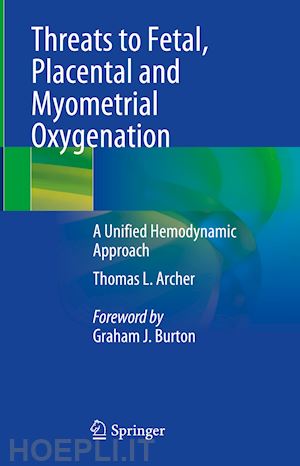
Questo prodotto usufruisce delle SPEDIZIONI GRATIS
selezionando l'opzione Corriere Veloce in fase di ordine.
Pagabile anche con Carta della cultura giovani e del merito, 18App Bonus Cultura e Carta del Docente
This book presents the theory that positional obstruction of the inferior vena cava by the gravid uterus might contribute to the causation of preeclampsia, fetal growth restriction, preterm birth, dysfunctional labor and uterine atony. Investigating this possibility is timely, since non-invasive technology now exists which detects hemodynamically significant obstruction of the inferior vena cava in real time, by relying on the fact that such obstruction causes an immediate decrease in maternal cardiac output. If further research shows that obstruction of uterine venous return at the inferior vena cava can cause maternal or fetal injury, systematic reduction of this obstruction during gestation might improve maternal and fetal outcomes.
Written in a direct, informal and engaging style-- and enriched with clinical insights and abundant colorful graphics-- this thought-provoking and potentially ground-breaking work should be of interest to maternal and neonatal health professionals, including obstetricians, maternal-fetal medicine specialists, neonatologists, obstetric anesthesiologists and midwives.
Chapter 1. Obstruction of Uterine Venous Return.- Chapter 2. Cardiac Output-Guided Maternal Positioning.- Chapter 3. Preeclampsia and Fetal Growth Restriction: Intervillous Space Flow.- Chapter 4. Preeclampsia and Fetal Growth Restriction: Intervillous Space Pressure.- Chapter 5. More Perspectives on Preeclampsia and Fetal Growth Restriction.- Chapter 6. Dysfunctional Labor and Uterine Atony.- Chapter 7. Preterm Birth.- Chapter 8. Electrical Cardiometry for Trending Maternal Cardiac Output.- Chapter 9. Parallels Between Myometrium and Myocardium.- Chapter 10. Discussion and Suggestions for Research.
Thomas L. Archer, MD, MBA
Former Clinical Professor of Anesthesiology and Director of Obstetric Anesthesia
University of California San Diego School of Medicine
La Jolla, California, USA











Il sito utilizza cookie ed altri strumenti di tracciamento che raccolgono informazioni dal dispositivo dell’utente. Oltre ai cookie tecnici ed analitici aggregati, strettamente necessari per il funzionamento di questo sito web, previo consenso dell’utente possono essere installati cookie di profilazione e marketing e cookie dei social media. Cliccando su “Accetto tutti i cookie” saranno attivate tutte le categorie di cookie. Per accettare solo deterninate categorie di cookie, cliccare invece su “Impostazioni cookie”. Chiudendo il banner o continuando a navigare saranno installati solo cookie tecnici. Per maggiori dettagli, consultare la Cookie Policy.